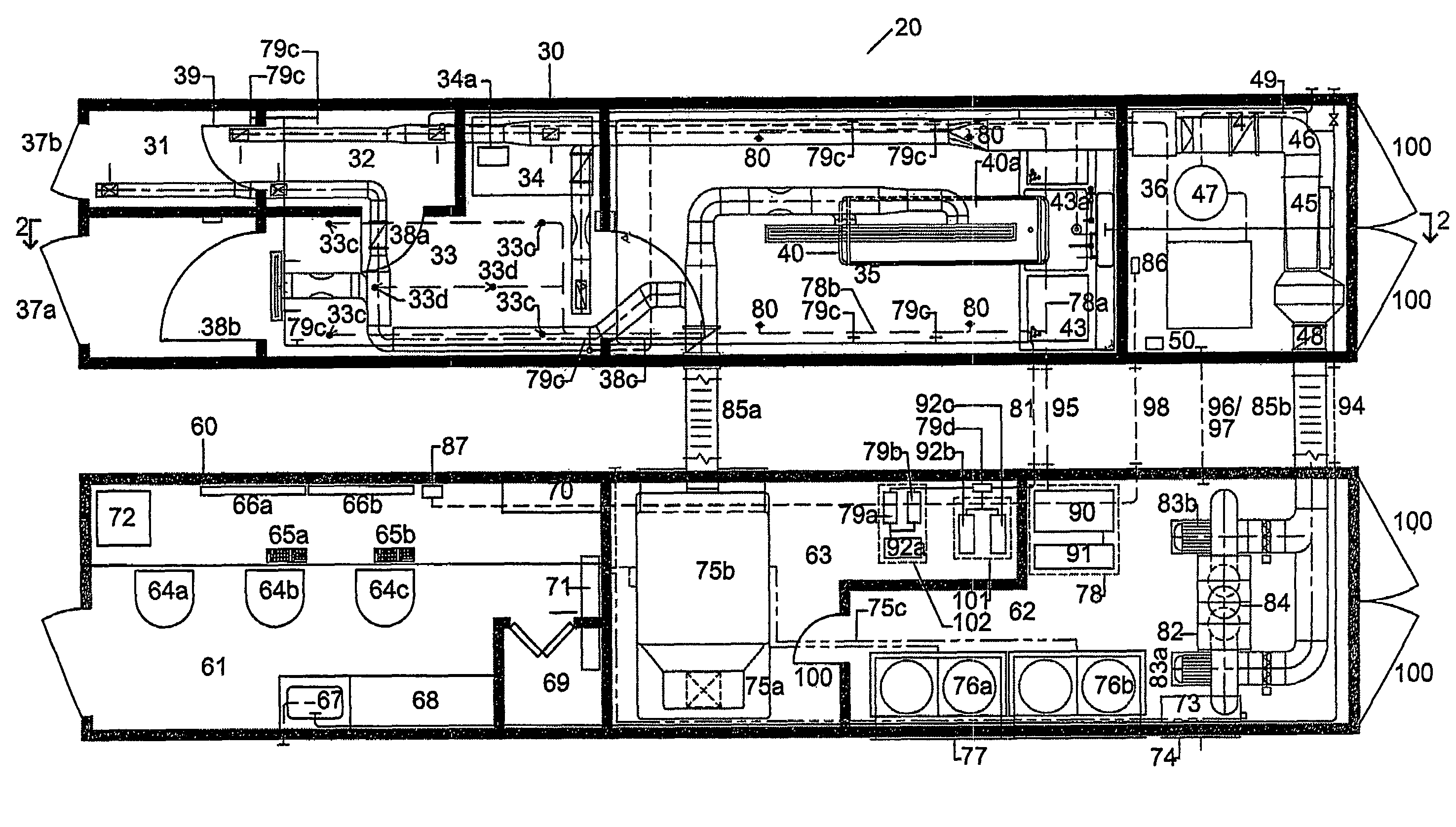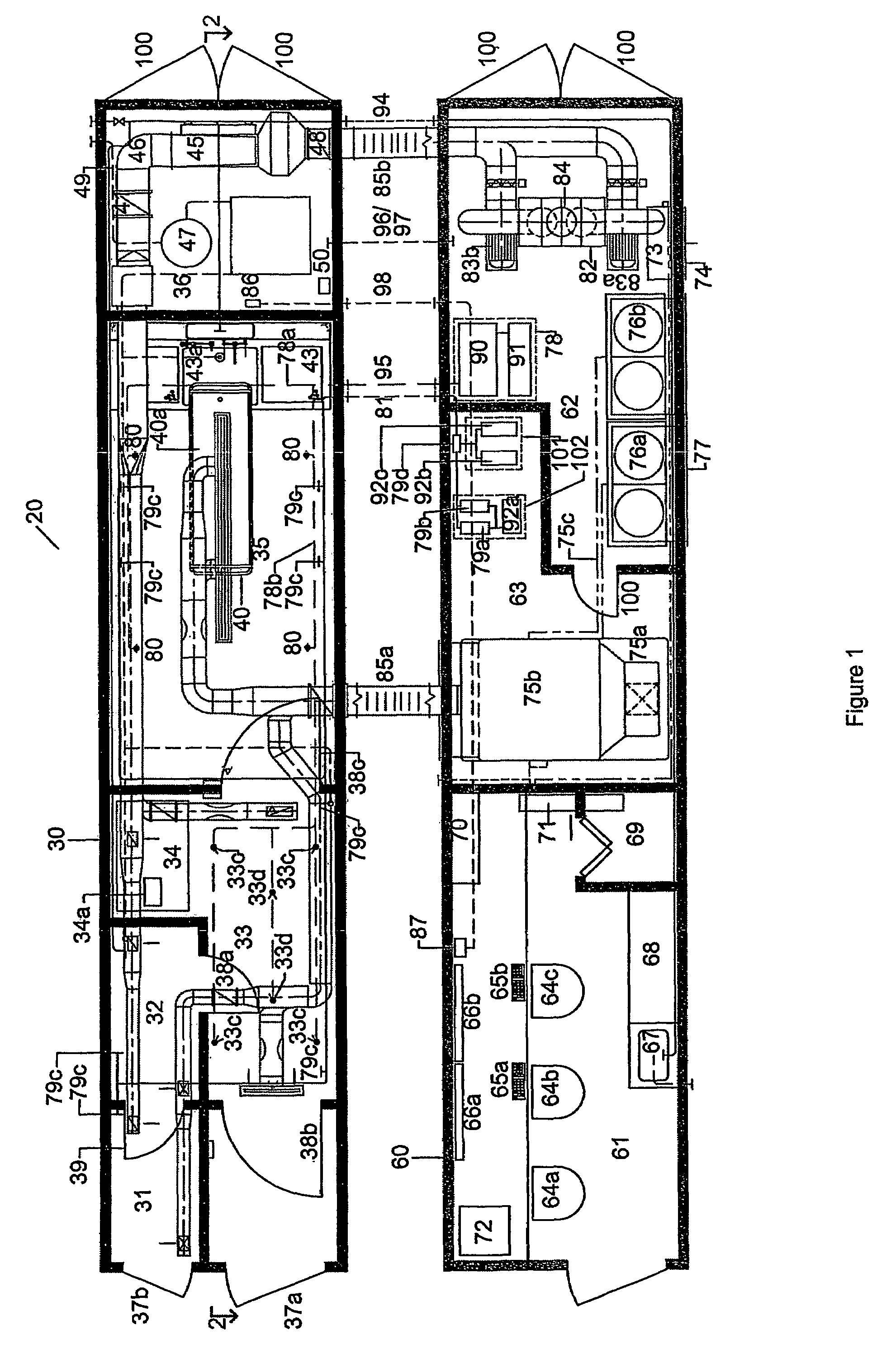Mobile containerized autopsy facility
a containerized, autopsy technology, applied in monocoque constructions, items transportation vehicles, vehicles, etc., can solve the problems of inconvenient housing of contingency facilities, high construction and maintenance costs of each unit, and the standard bsl-3 or bsl-4 autopsy facilities
- Summary
- Abstract
- Description
- Claims
- Application Information
AI Technical Summary
Benefits of technology
Problems solved by technology
Method used
Image
Examples
Embodiment Construction
[0056]FIGS. 1, 1A and 1B show a containerized autopsy facility 20. The Facility 20 comprises an autopsy container 30 and a support container 60.
[0057]The autopsy container 30 and the support container 60 are each insulated (refrigerated) containers enveloping an air-tight, sealed compartment. The autopsy container 30 and the support container 60 may vary according to needs and requirements without departing from the basis of the invention. Exemplary containers for use in the practice of this invention include, but are not limited to 20-Foot ISO containers (length of 20 ft and width of 8 ft); 40 Foot ISO containers (length of 40 ft and width of 8 ft); Super high cube containers (Oversize containers); and Air containers (containers conforming to standards laid down for air transportation). In a preferred embodiment, the autopsy container 30 and the support container 60 are of 40 ft in length×8 ft in width×9.5 ft in height.
[0058]For the autopsy container 30, a seamless and sealed compa...
PUM
 Login to View More
Login to View More Abstract
Description
Claims
Application Information
 Login to View More
Login to View More - R&D
- Intellectual Property
- Life Sciences
- Materials
- Tech Scout
- Unparalleled Data Quality
- Higher Quality Content
- 60% Fewer Hallucinations
Browse by: Latest US Patents, China's latest patents, Technical Efficacy Thesaurus, Application Domain, Technology Topic, Popular Technical Reports.
© 2025 PatSnap. All rights reserved.Legal|Privacy policy|Modern Slavery Act Transparency Statement|Sitemap|About US| Contact US: help@patsnap.com



